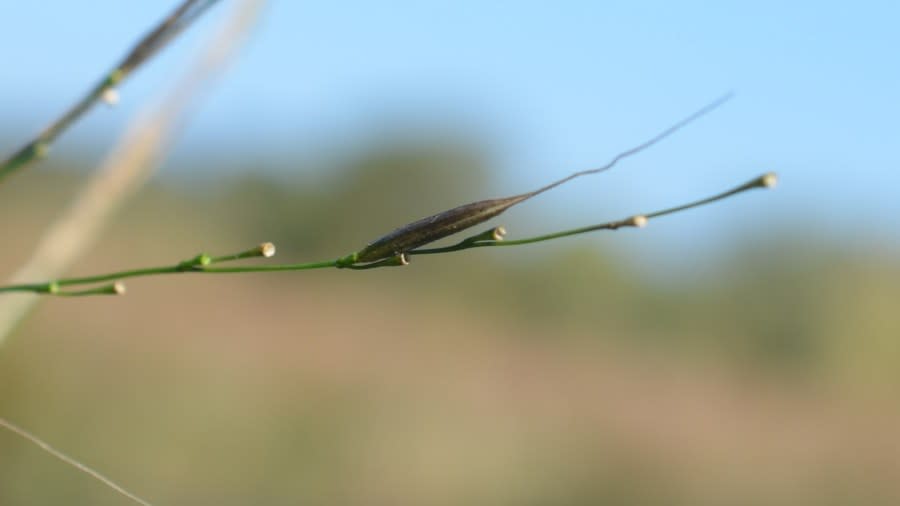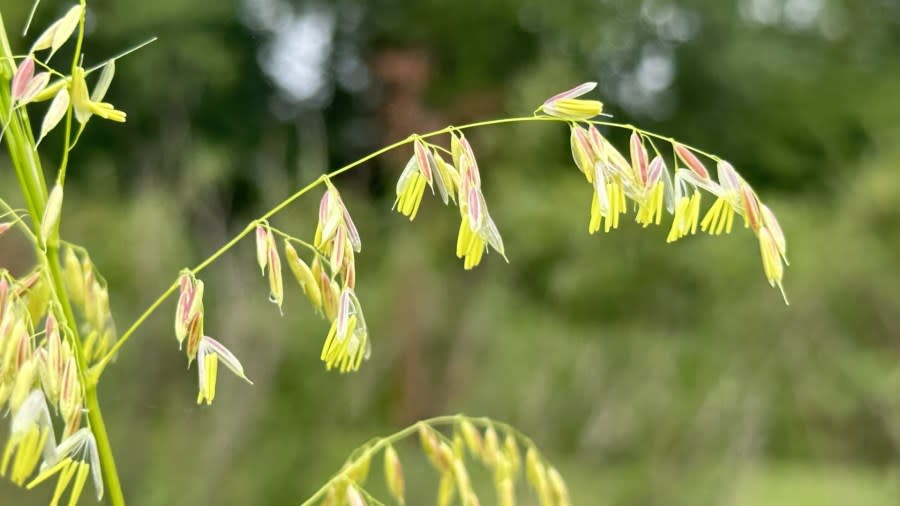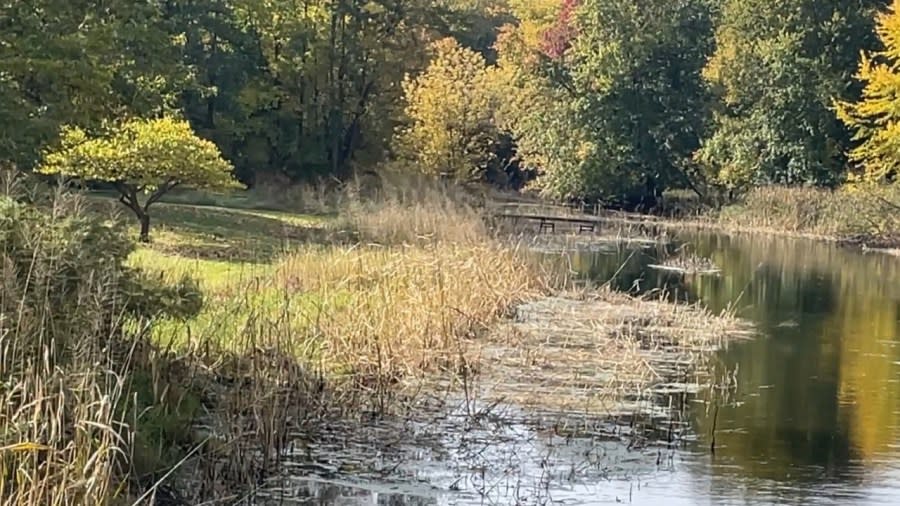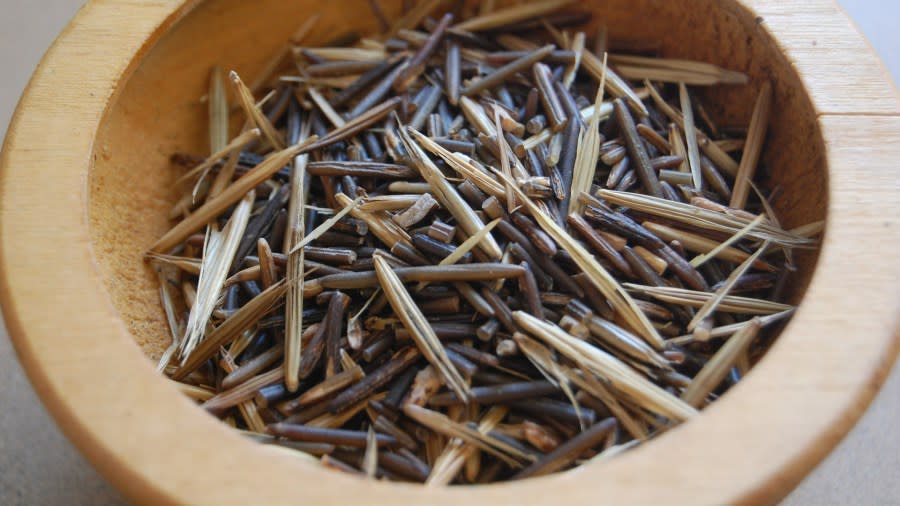Keeping a tradition alive: Michigan tribes work to restore wild rice
ATHENS TOWNSHIP, Mich. (WOOD) — Long before Michigan was granted statehood, before the first pilgrims made landfall and even before Christopher Columbus made his fateful journey across the Atlantic, the Anishinaabe were here.
Indigenous people can trace their roots back more than 2,000 years in the Midwest alone. While many groups moved in and out over the years, the territory is most commonly claimed by three Anishinaabe tribes — The Council of the Three Fires — the Chippewa, the Odawa and the Potawatomi.
History tells us how most of that land was lost to colonizers and how settlers tried to force Indigenous people to assimilate. But the native people held on and are still passing down their customs and way of life. Michigan’s 12 federally recognized tribes are now working together to revive some of those things that were once lost, including a grain that was once a staple of their ancestors’ diet: manoomin.
Manoomin — the “good seed” or “good berry” in Anishinaabemowin — is a long grain that grows on the shorelines of both rivers and lakes. It was not only plentiful but also high in nutritional value. According to the Great Lakes Indian Fish & Wildlife Commission, manoomin is high in protein and several key vitamins and minerals, including iron, potassium, riboflavin and niacin. It would typically be served as part of a meal with fish or squash and was also used in certain medicines and ceremonies.
Anishinabek oral tradition says that manoomin is what brought their ancestors to the Great Lakes region. Legend has it that their ancestors moved from the East Coast to the Great Lakes region after being visited by three prophets who told them to travel west until they found “the place where food grows on water.”
Douglas Taylor, the former tribal historical preservation officer for the Nottawaseppi Huron Band of the Potawatomi, says manoomin represents several elements of Indigenous living.
A close-up look at a single grain of manoomin. (Courtesy John Rodwan) A look at manoomin in the flower stage. (Courtesy John Rodwan) A patch of wild rice sits along the shoreline of the Nottawa Creek in St. Joseph County. (Matt Jaworowski/WOOD TV8) A close-up look at a bowl full of manoomin. (Courtesy John Rodwan)
“It’s not only a food source. If you look at it historically, the wild rice grows along the water. The water also provides fish, another staple in our culture,” Taylor told News 8. “This is a bend in the river that is easily defended, there is high ground. … Where you find wild rice, you’re going to find encampments. Where you find encampments, you’re probably going to find burial grounds. Those three kind of go hand-in-hand.”
Like several other harvested foods, manoomin is seasonal. A successful harvest required the entire tribe to work together.
Paleoindians and beyond: West Michigan’s history goes back millennia
“This was not an individual thing. This was a tribal event. Everybody had a job,” Taylor explained. “You come out here, you and your canoes. You made your little wands or tools to shake the rice off of the stalks. You would bring them in and prepare them.”
Though the process changed some as time went on, the basics stayed the same. Taylor was taught how to harvest and prepare manoomin as a child, taught by elders to pass on that way of life.
“You dig a hole and put a piece of leather over it,” he explained. “You have special moccasins you would wear and you would step on it to separate the kernels (from the shell). Then you would put it in a copper kettle and you would cook it. But you have to be very careful because you could scorch it and destroy it real quick. It takes a certain amount of skill.”
Manoomin thrived across the Great Lakes alongside the Anishinaabe, but most of the rice beds were destroyed as the Anishinaabe forfeited their land in the treaty era of the 18th and 19th centuries. Michigan’s logging industry and the dredging and draining of wetlands helped kill off most of the manoomin, and now agricultural runoff prevents it from coming back. Manoomin stocks are so low in Michigan that most tribes have to buy it from harvesters in other states.
The ‘other’ mounds: Lost history is a part of West Michigan’s story
John Rodwan, the environmental director for the Nottawaseppi Huron Band of the Potawatomi, says people who own waterfront homes also play a role in destroying manoomin habitat. Rodwan gave a tour of a piece of property on Nottawa Creek that the tribe bought for the sole purpose of growing manoomin.
“You can see our neighbor right here has removed a lot of his rice,” he said. “Riparian owners don’t like wild rice because it grows tall (and blocks their view of the water). So, it still gets a fair amount of abuse.”
Michigan’s tribes are working to change that. Several years ago, the 12 federally recognized tribes partnered with several state departments to launch the Michigan Wild Rice Initiative. Their goal: to protect and preserve the current manoomin stocks and bring the wild rice back to areas where it once thrived.
“We monitor the existing stands for health. We try to protect those stands by (purchasing land) like this. We bought this parcel to protect this rice and use it to transplant to other properties,” Rodwan told News 8.
The trauma of Indigenous boarding schools: Can government investigations deliver justice?
Several tribes conduct their own annual planting sessions, using harvested manoomin to spread the grains to other bodies of water. Sometimes, they are successful. Other times, the rice fails to take hold because humans aren’t the only ones looking for a meal.
“Geese and carp are big predators of rice. I think the geese could almost be considered an invasive species because the populations have just mushroomed (in recent years),” Rodwan said. “The geese, as do all waterfowl, love rice. The carp can eat the emerging rice as it is coming up in the spring.”
For Taylor, reviving manoomin circles back to the oppression Indigenous communities felt over past centuries.
“It all goes back to the federal government trying to destroy the culture and the Native American lifeways,” Taylor said. “In order to preserve our traditional lifeways, (our ancestors) had to go underground. The powwows would continue deep in the woods in a remote area. Our traditional teachings were continued on. Our stories were continued on in private and sometimes they were so secretive that they did not even tell some of the tribal leaders because they wanted to try and protect them and insulate them from the outside world.”
For our descendants: Grand River Band won’t give up fight for federal recognition
Rodwan believes many people would get on board with protecting and expanding manoomin once they learn more about the grain and its role in Indigenous culture.
“I think the general public would embrace rice more and rice protection the more they knew about how important it was to a lifeway and the entire ecology,” Rodwan said. “Tribes don’t just look at it as their right to protect. They want a better lifeway. Wild rice is kind of an indicator species, too. So I like to think, ‘So goes the rice, so goes the community.’ Tribal communities were in decline for many years. Now, we are revitalized and so is the rice.”
For the latest news, weather, sports, and streaming video, head to WOODTV.com.




